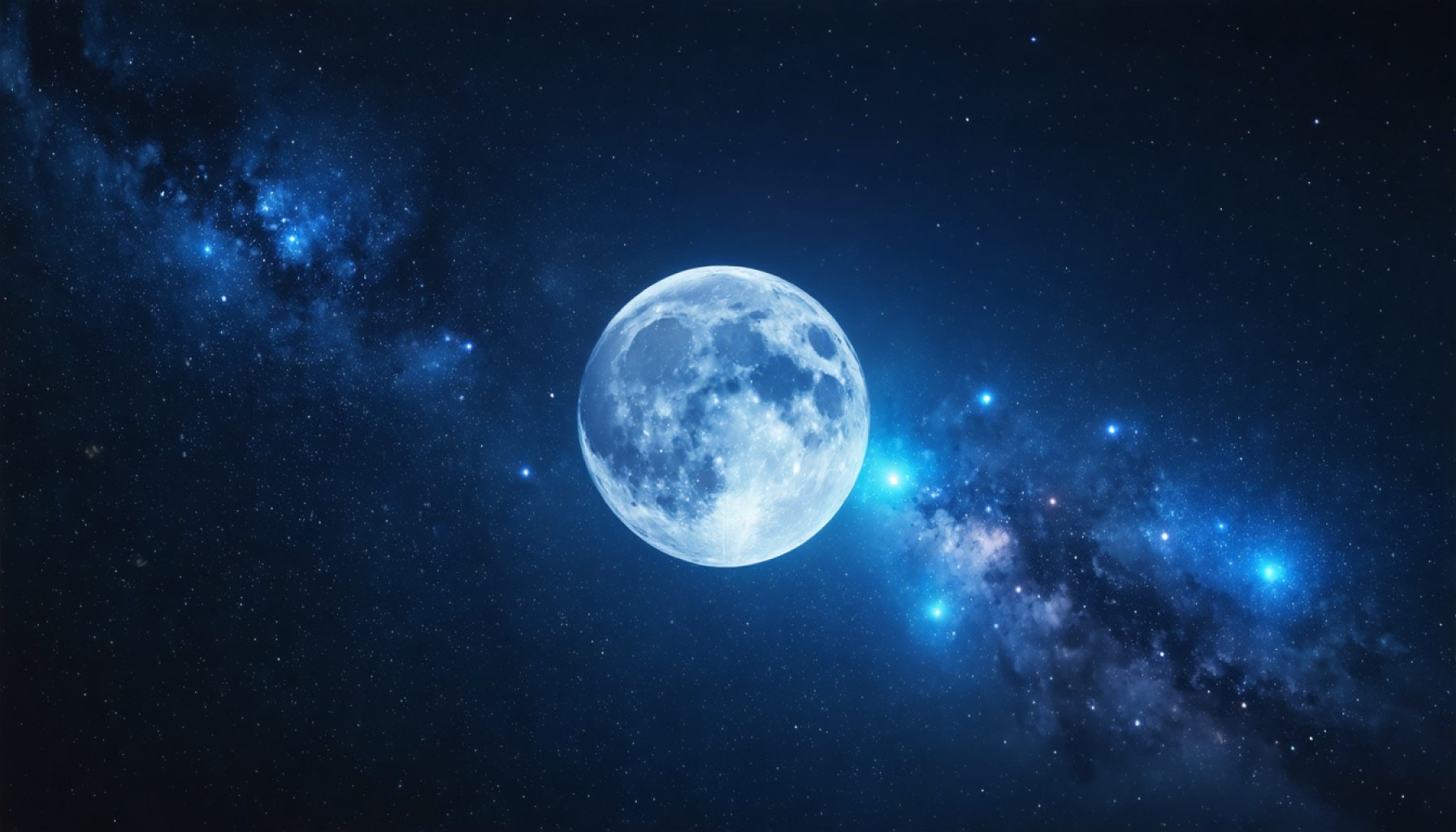- A captivating celestial event occurs on April 12, 2025, featuring a nearly full moon and the blue giant star Spica in a cosmic dance visible worldwide.
- The full moon, with over 99% illumination, shares the night sky with Spica, the brightest star in Virgo, creating a striking visual pairing.
- Spica, significantly larger and more luminous than the sun, emits light visible after traveling 250 years across space.
- This event highlights the contrast between the moon’s quick-reflected light and Spica’s ancient glow, illustrating our universal connection.
- Southern hemisphere observers gain a distinct view in the northeastern sky, enhancing the global appeal of this celestial rendezvous.
- The spectacle serves as a reminder of the universe’s grandeur, encouraging wonder and appreciation of its vast beauty and mystery.
As dusk blankets the sky on April 12, 2025, an enchanting celestial ballet will unfold for all who turn their gaze upwards. The night promises a particularly captivating show as the full moon, in all its luminous glory, meets the dazzling blue giant star, Spica.
Picture this: the spotlight-stealing moon, with its surface more than 99% illuminated, gracefully sharing the stage with Spica, the brightest beacon in the constellation of Virgo. This cosmic duet, visible from both hemispheres, transforms the evening into a spectacle of light and distance.
While the moon dazzles with its familiar silvery sheen, bathing everything beneath it in a ghostly glow, Spica tells a different story. Outshining many of its stellar counterparts, Spica is a colossal powerhouse, burning with a bluish intensity. Its light, which has trekked across 250 years of vast cosmic expanse, finally graces our skies to join this astral dance.
Consider the scale: Spica’s mass dwarfs our sun by nearly eleven times, its radiant aura pulsating with 20,500 times the sun’s luminosity. Yet, amidst its grandness, here it stands alongside Earth’s own satellite, creating a mesmerizing visual juxtaposition.
The moon, our celestial companion, reflects light taking a mere 1.3 seconds to reach us, a stark contrast to the ancient photons of Spica. This pairing is not just about aesthetics but serves as a reminder of our intricate yet intimate connection to the universe.
Observers in the southern hemisphere will enjoy a unique perspective of this event in the northeastern sky, adding a universal appeal to this celestial rendezvous. A moment like this rekindles our sense of wonder and curiosity, encouraging us to pause, breathe, and embrace the awe-inspiring dance of heavenly bodies above.
This cosmic event is more than just a spectacular display; it’s a vivid reminder of the universe’s grand theater—inviting us to revel in its vastness, mystery, and beauty, where even the smallest acts take on an immense, breathtaking significance.
Witness the Celestial Dance: A Mesmerizing Show Between the Moon and Spica
On the night of April 12, 2025, the sky will be more than just a canvas of stars. An awe-inspiring astronomical event will take place as the full moon and the blue giant star, Spica, perform a cosmic duet visible across the globe. This celestial spectacle offers not only beauty but also a profound reflection on our place in the universe.
Exploring the Cosmic Players
Understanding the Moon’s Role:
The full moon on this night will be more than 99% illuminated, casting its silvery glow across the night sky. Our lunar companion, with its familiar glow, provides a stark contrast to Spica’s distant yet brilliant light. This event is a reminder of the moon’s closeness, as it reflects sunlight that takes just 1.3 seconds to reach Earth.
A Closer Look at Spica:
Spica is not an ordinary star; it is a blue giant, known for its extraordinary mass and luminosity. It is part of the Virgo constellation and serves as its brightest star. Spica outshines many stars with 11 times the mass of our Sun and 20,500 times its brightness. Its light takes over 250 years to reach our eyes, showcasing the vast distances of the universe.
Real-World Use Cases and Insights
How to Enjoy the Event:
1. Find a Quiet Spot: Location matters. Head somewhere with minimal light pollution for the best view.
2. Use a Star Map: Apps and star maps can help you locate Spica and other celestial bodies.
3. Capture the Moment: Whether you have a DSLR or a smartphone with a decent zoom capability, capturing this celestial event will require a stable surface or tripod.
Why It Matters:
This event isn’t solely about the spectacle. It emphasizes Spica’s significance in astrology and various cultures as a symbol of harvest, as it marks the time of year when crops mature.
Market Forecasts & Industry Trends
The interest in astronomical events is spurring a growth in related tech and gadgets. Expect to see increasing innovations in telescopes, mobile apps for star-gazing, and augmented reality features that enhance understanding and engagement with celestial events.
Controversies & Limitations
Despite its beauty, light pollution remains a challenge, especially in urban areas, making such celestial events less visible. Efforts in promoting dark sky reserves are crucial for preserving night sky visibility.
Quick Tips for Stargazers
– Timing is Key: The best time to view will be shortly after sunset.
– Binoculars Offer Clarity: For those without telescopes, a good pair of binoculars can enhance visibility.
– Join Together: Consider community stargazing events for shared equipment and knowledge.
Actionable Recommendations
– Plan Ahead: Check weather forecasts and plan an outing to a dark-sky location.
– Stay Informed: Utilize astronomy apps that provide real-time alerts and updates.
– Inspire Young Minds: Encourage kids to participate, fostering a lifelong interest in science and the cosmos.
For more resources and information on upcoming celestial events, visit the NASA website for detailed guides and educational material.
By immersing yourself in this event, you are not only witnessing a rare cosmic convergence but reconnecting with the captivating mysteries of our universe. Whether you’re a seasoned astronomer or a casual stargazer, the moon and Spica’s celestial ballet promises to be an unforgettable night sky performance.
